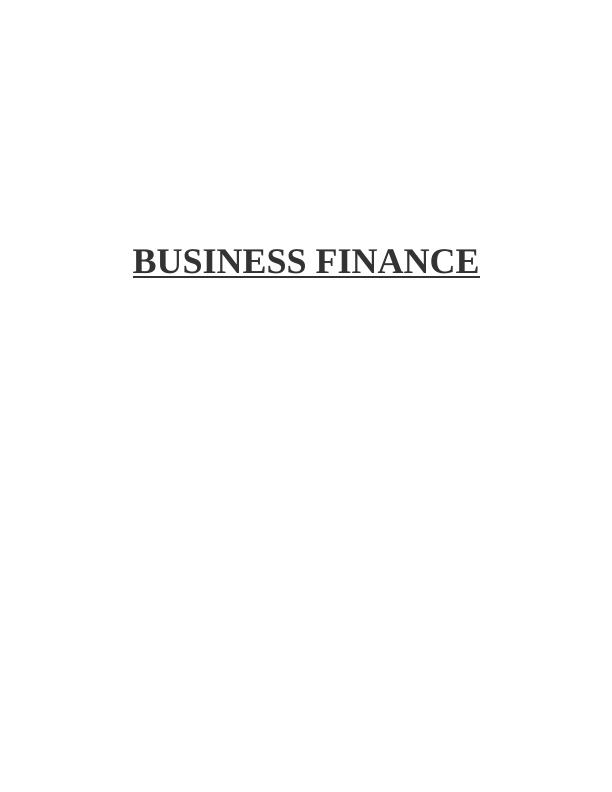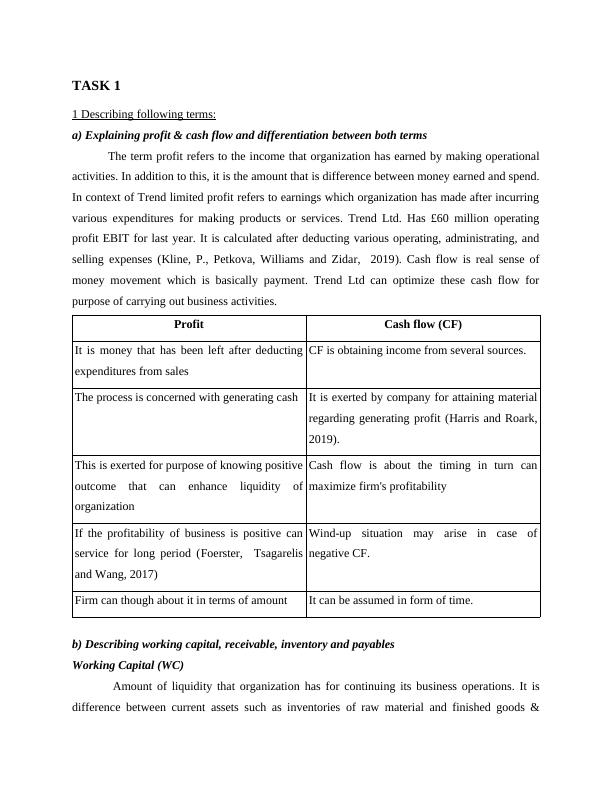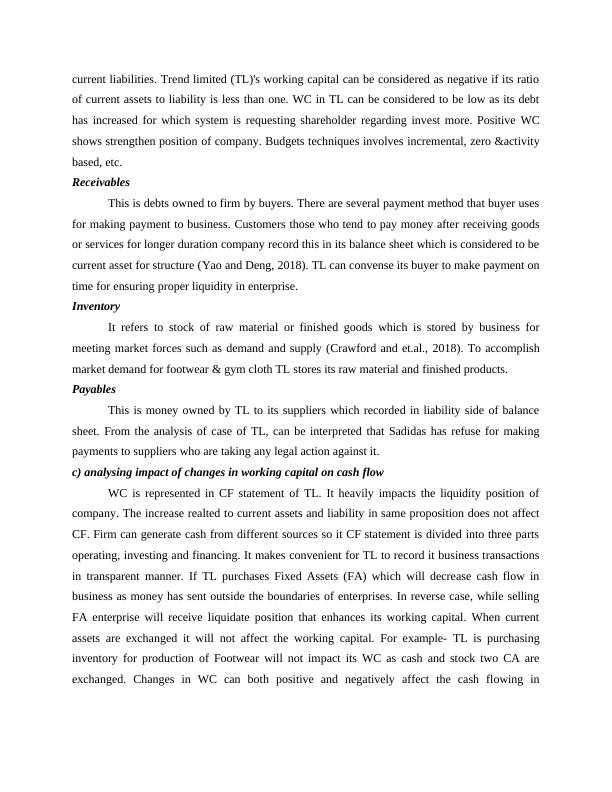Understanding Profit, Cash Flow, and Working Capital in Business Finance
This assignment is a coursework assessment for the Business Finance module. It has a word limit of 2500 words and must be submitted by Monday 19th April 2021 at 14:00. The assignment must be completed individually and use the Harvard referencing system.
11 Pages3326 Words389 Views
Added on 2022-12-15
About This Document
This document provides an in-depth understanding of profit and cash flow in business finance, along with the differentiation between the two terms. It also explains the concept of working capital and its components, such as receivables, inventory, and payables. The document further discusses the impact of changes in working capital on cash flow and analyzes how TL company's financial position is affected by its business operations. Additionally, it provides recommendations for improving cash flow and better management of working capital. The second task includes the calculation of a cash budget for Thorne Estates Limited and provides recommendations to the management based on the cash budget analysis.
Understanding Profit, Cash Flow, and Working Capital in Business Finance
This assignment is a coursework assessment for the Business Finance module. It has a word limit of 2500 words and must be submitted by Monday 19th April 2021 at 14:00. The assignment must be completed individually and use the Harvard referencing system.
Added on 2022-12-15
ShareRelated Documents
End of preview
Want to access all the pages? Upload your documents or become a member.
Managing Trend Limited and its Impact on Financial Results
|12
|3521
|195
Business Finance: Profit, Cash Flow, and Working Capital
|11
|3146
|99
Business Finance Assignment - Uber Tools Ltd
|12
|3110
|173
Business Finance: Explaining Different Terms and Their Application
|11
|3245
|66
Business Finance Assignment - UberTools Ltd
|13
|3470
|197
Business Finance: Profit, Cashflow, Working Capital, Budgeting Methods
|13
|3156
|91




